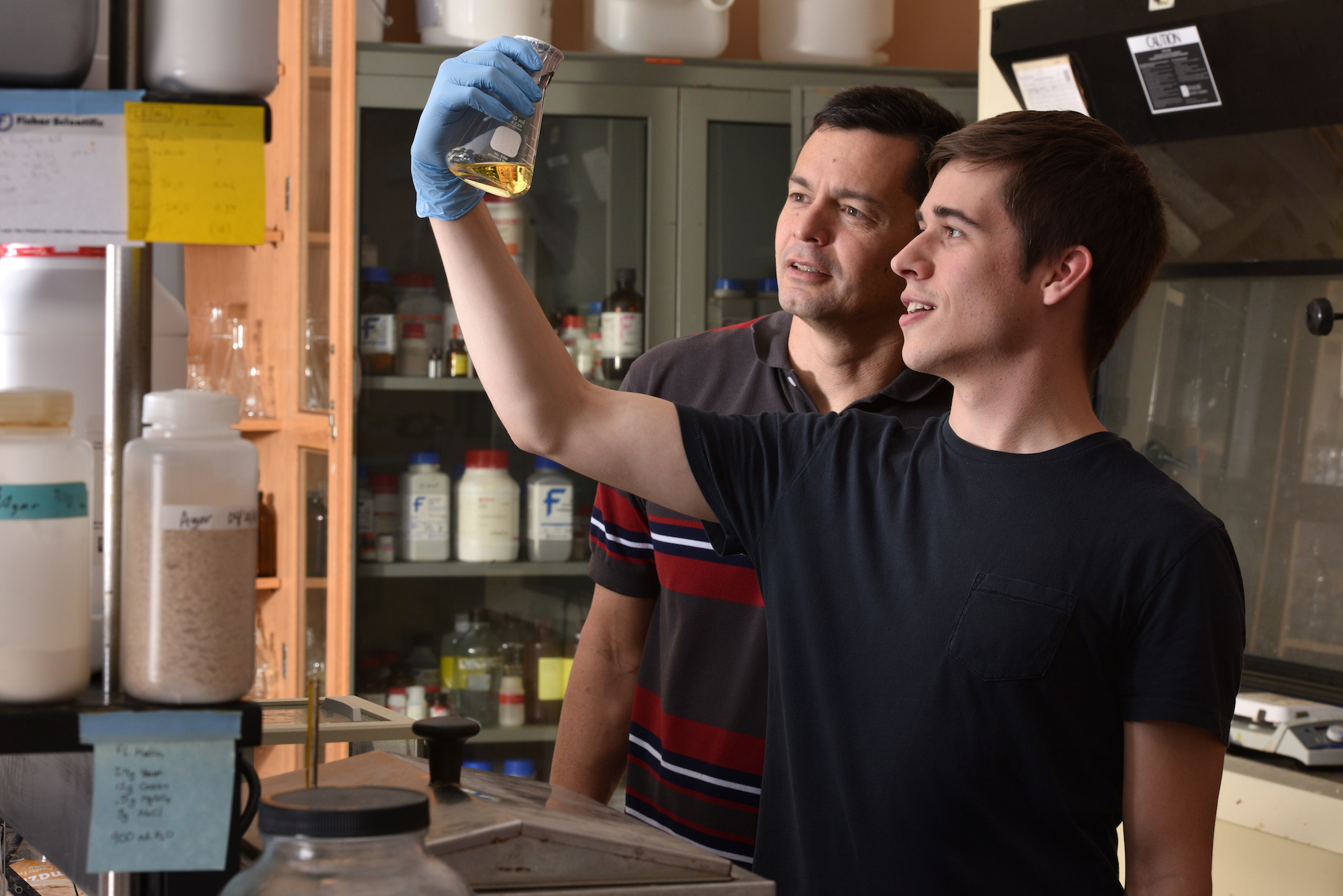
Reuben Peters helps students produce high quality research through his commitment to student success.
Peters, a professor in biochemistry, biophysics and molecular biology, won the LAS Award for Excellence in Graduate Mentoring.
Through his guidance 17 students have received graduate level degrees and his mentoring has led to more than 90 publications and four patents.
“Reuben has been crucial in my success as both a graduate student and as a researcher,” said Ryan Nett, a former graduate student of Peters’ and current postdoctoral fellow at Stanford University.
Nett was a key researcher in a recent important finding from Peters’ lab group: understanding how rhizobia, the bacteria that fix nitrogen in soybeans, make and use a plant hormone called gibberellin.
While other plant-associated microbes are known to make plant hormones, they are typically simple and only needed one or two enzymes. Gibberellin, on the other hand, requires eight or nine enzymes and more than a dozen different chemical transformations. A particular cluster of genes in the rhizobia genome was suspected to make gibberellin.
“Following up on work from previous members of our lab, I was able to characterize each of the genes from this gene cluster, showing that they do indeed act to produce gibberellin,” Nett said.
But rhizobia turned out to not be the only bacteria containing this set of genes.
“We also found something that had never been reported in the literature, which was that this operon was actually found in plant pathogens as well,” Peters said.
The rhizobia appear to use gibberellin to increase the size of the nodules on the roots of soybeans that they live in. But bacterial pathogens of rice, wheat, and other cereal crops make gibberellins in the leaves of the host plant to increase their ability to infect it.
Peters’ lab is investigating whether the gibberellin produced by rhizobia cause a similar side-effect in the roots, causing them to be less resistant to disease.
“Because these plant pathogens produce gibberellin in order to increase their ability to infect the plant, we speculate that the production of gibberellin by rhizobia may also negatively impact legume defense processes, though this is still an open question,” Nett said.
In a research lab, new answers are always leading to new questions. Peters trains his students to continue the scientific process onward by helping them to develop the ability to independently conceive of new research projects and directions.
“He gave me the freedom to explore questions that I found to be interesting and pertinent,” Nett said. “I felt that this really helped me grow as a scientist, as it gave me the opportunity for independent thinking.”
The diversity of ideas and perspectives the students bring keeps the research fresh and forward-moving.
“The very best students will take over a project and they’ll take it into that next dimension where I know in rough terms what it is we’re trying to do but I don’t know anything about how best to get there,” Peters said.
When students can do this, he knows they are ready to go out from Iowa State and build upon the research field.